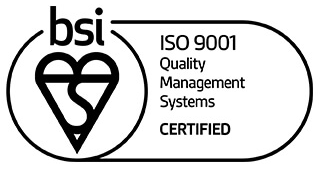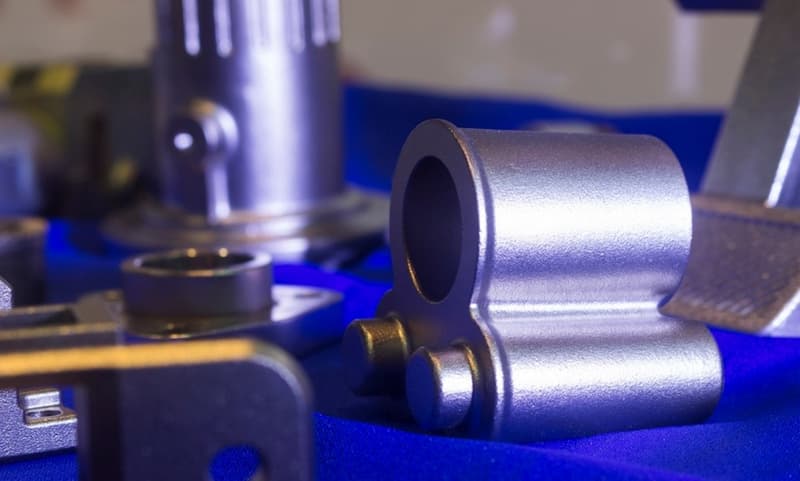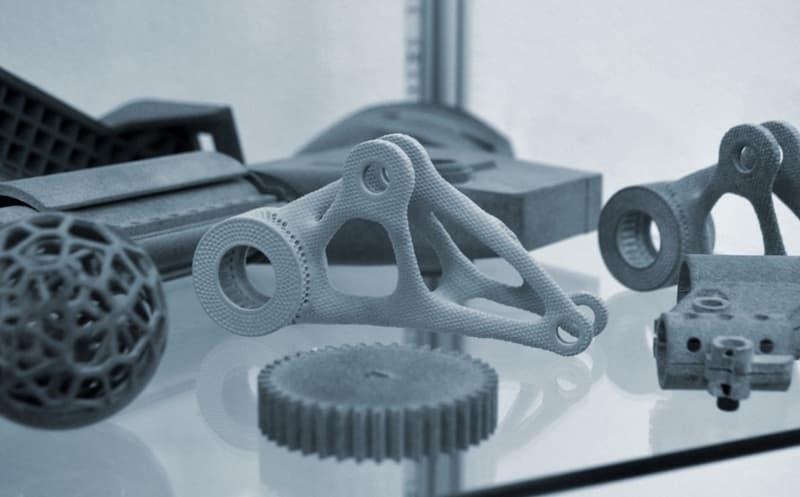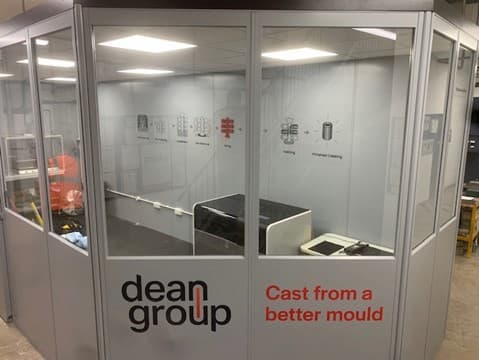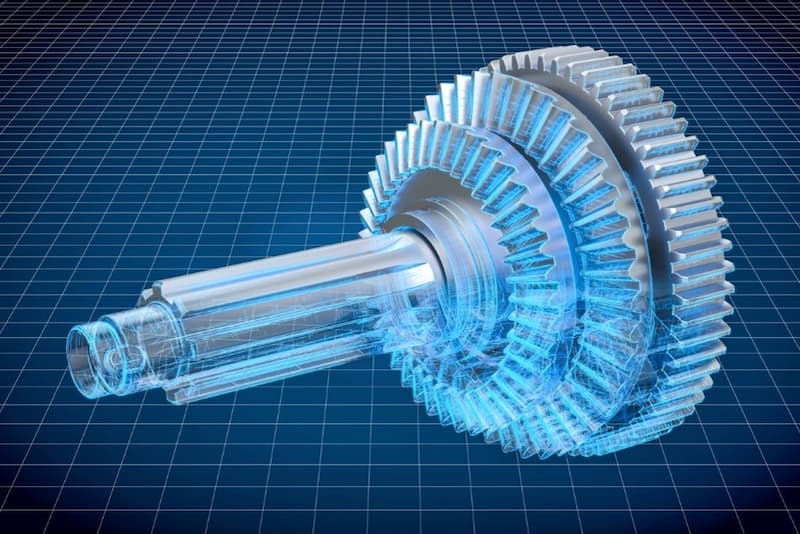A Guide to 3D Prototype Printing for Metal Casting
Prototyping is crucial in metal casting as it provides invaluable review and analysis, significantly reducing investment costs for your manufacturing needs.
Choosing 3D prototype printing lets designers guarantee that their largest investment will be allocated to the final production of components, creating an efficient process from start to finish. Read on to discover how 3D-printed prototypes will benefit your next project.
Understanding 3D Prototype Printing
3D prototype printing, also known as rapid casting prototyping, is an innovative technique we specialise in here at Dean Group. It enables our engineers to create three-dimensional physical models directly from digital designs provided to us by our clients or created by our team.
The clients will then visualise and test their product or machine concepts. This analysis and review will identify any unforeseen flaws, with future improved designs eliminating them to develop a finalised design for metal casting.
Comparing Traditional Prototyping to 3D Printed Prototyping
Traditional metal casting prototyping is outdated as it involves tooling creation, an expensive and time-consuming investment often wasteful in the early stages of design. However, with 3D printing technology, prototyping has become faster, more flexible and more cost-effective. Our 3D printing for casting allows designers and manufacturers to create highly detailed and complex geometries easily.
Benefits of 3D Printed Prototyping in Early-stage Manufacturing
After investing in specialised wax 3D printers, we have created 3D prototype models constructed layer by layer. This cutting-edge technology for metal casting manufacturers brings numerous advantages to the early stages of manufacturing.
Design Validation: 3D prototype printing provides designers with physical models that accurately represent their digital designs. This allows for visual inspection and physical testing of the product's form, fit, and function, ensuring that it meets expectations before embarking on costly manufacturing processes.
Cost-Effective Metal Casting: Rapid prototyping eliminates the need for traditional tooling methods, such as moulds or dies, which can be expensive and time-consuming to create. With 3D printing, manufacturers can produce prototypes directly from digital files, saving time and money in the early stages of product development.
Quick Design Iterations: With 3D prototype printing, design modifications can be easily implemented and tested. This iterative process enables manufacturers to quickly adjust and refine their designs, leading to more efficient product development cycles.
Prototyping Complex Geometries: Unlike traditional manufacturing methods, 3D printing allows for the creation of highly complex geometries with ease. This level of design freedom opens up new possibilities for innovative and advanced product concepts that may not be achievable using conventional manufacturing techniques.
Reduced Time to Market: By leveraging 3D prototype printing, manufacturers can accelerate their product development timelines. Rapid iteration cycles and quick design validation enable businesses to bring their products to market faster, gaining a competitive edge in their respective industries.
Reduced Financial Risk: With physical prototypes in hand, manufacturers can assess the feasibility of their designs and identify any potential issues or limitations early on. This mitigates the risk of costly mistakes during mass production and ensures a higher likelihood of a successful product launch.
Process of Wax 3D Printing Prototyping with a ThermoJet Wax Modelling System
Wax 3D printing with our ThermoJet wax modelling printer is a highly precise and efficient method to create prototypes for eventual investment casting.
This process involves using specialised equipment and wax materials to create intricate and accurate wax models for prototyping and production. Here is a step-by-step breakdown of the process:
- CAD Design: The CAD (Computer-Aided Design) file will be the wax 3D printing process blueprint. We usually expect a base 3D model to be supplied by our client. Still, we understand that not all persons or companies have the ability or the technical knowledge to produce 3D models suitable for 3D printing and investment casting.
With that knowledge, we offer a 3D model generation service with our experienced design team to get your parts digitally created and manufactured quickly.
- Digitally Slicing and Preparing the Model: The CAD file is imported into specialised slicing software that divides the model into thin layers, typically between 0.002 to 0.003 inches thick. This sliced model is then prepared for printing.
- Wax Printing Process: The wax material is melted and filled into the printer's reservoir. Ensuring the wax is at the correct temperature and viscosity is crucial for optimal printing results.
The ThermoJet wax printer uses a print head to deposit thin layers of molten wax onto a build platform. The print head moves horizontally and vertically, following the instructions from the sliced model.
- Layer-by-Layer Building: The printer builds the wax model layer by layer, fusing it with the previous one as it cools and solidifies. This layering process continues until the entire model is complete.
- Support Structures: Support structures are sometimes necessary to ensure the stability of overhanging or delicate features during printing. These structures are easily removable after the printing is complete.
- Post-Printing Finishing: Once the printing is finished, the wax model undergoes post-processing steps to refine the surface finish and remove imperfections.
- Final Inspection: Inspect the wax model for any defects or errors. Conduct thorough examinations to ensure the accuracy of dimensions, details, and functionality.
- The Utilisation of Wax Models: The wax model produced through ThermoJet wax printing serves as a high-quality prototype for further evaluation and testing. It can also be used as a pattern for investment casting processes, where the wax model is encased in ceramic and then melted away, leaving behind a cavity for the final metal casting.
3D Rapid Prototyping at Dean Group
Wax 3D printing prototyping with a ThermoJet wax printer offers an efficient and accurate solution for creating high-quality wax models for various applications. This cutting-edge technique allows designers and manufacturers to speed up product development, reduce costs, and easily produce intricate designs.
In our recent success with the Cloud Cities Barcelona project, 3D printed rapid prototyping played a crucial role in achieving our goals. This innovative approach allowed us to overcome unique challenges and contribute to creating essential components for intricate architectural design. By utilising 3D printing technology, we could design, test, cast, and machine high-quality nodes efficiently and effectively within the fixed installation deadline. Using 3D printed rapid prototyping offered us several key benefits that greatly contributed to the project's success.
Read our other case studies for more examples of how beneficial our 3D printing process is for our clients, or contact us directly to discuss it and discover how we will improve your next project.
Registered in England VAT No: 146307478 Company Registration No: 1062820
